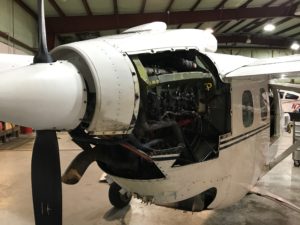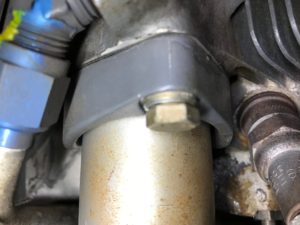Podcast: Play in new window | Download
Induction system couplings and clamps. They are often overlooked… until they become an issue!
But why let it go that long? Why risk having a problem somewhere away from home, where there might be limited tools and any necessary help. It’s much better to do a little preventive maintenance on your airplane’s induction system, to guard against any unwelcome surprises.
Listen to today’s episode to hear about some stories about airplanes that had induction system issues that became challenging to figure out what was going on, including a recent one with Bret Chilcott and his 1947 Stinson. Find out how Bret discovered the real problem during a Facetime call we had a few weeks ago. Good eye Bret!
It’s a good idea to tighten induction coupling clamps at the annual inspection. The following coupling is on a Continental turbocharged engine with the induction system on the top.
 It’s actually on this Cessna 337 that we did some work on awhile back at Classic Aviation.
It’s actually on this Cessna 337 that we did some work on awhile back at Classic Aviation.
The following Lycoming induction coupling clamps can be tightened with a straight blade screwdriver, or a 5/16 wrench or socket.
It’s also a good idea to check the torque on the induction flange bolts. Induction leaks can be a minor nuisance, until something falls apart… then they become a major nuisance.
Take a look at your induction system, or have your A&P take a look, to make sure you don’t have any issues. You just might prevent a really frustrating situation, (or a dangerous situation,) someday.
Check back next week, for a special episode featuring a conversation with my very good friend, Brian Holmes! You can look for that one next Thursday, Thanksgiving Day!





Recent Comments